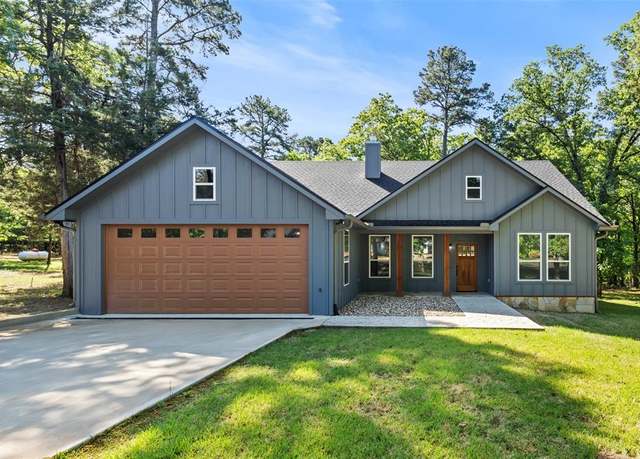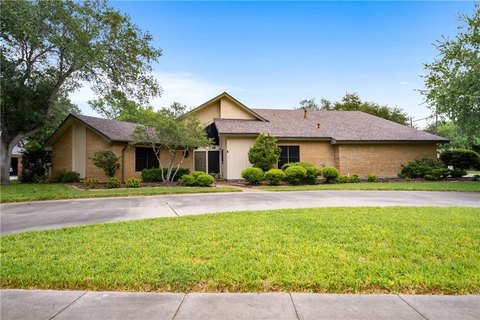On a crisp autumn afternoon, Mia and her family arrived at their little cottage tucked away in the hills of the Catskills. The sun started dripping behind the trees, casting long shadows across the forest floor. The house, with its charming stone exterior, wooden shutters, and a welcoming porch, seemed like the perfect retreat from the hustle and bustle of city life. Inside, the smell of pine mixed the warmth of a crackling fire in the stone fireplace. Outside, the distant sound of a babbling brook added to the peaceful atmosphere.
Mia had spent most of her life in a busy urban apartment, and this was her first time experiencing life in a cottage. She had always imagined a cottage as something out of a fairytale, a quaint little house with just enough space to escape and recharge. Sitting with a cup of tea, she realized how deeply she connected with the place. It wasn’t just the coziness that made it special—it was the sense of peace and simplicity, a break from the complexities of modern living. Cottages, she thought, weren’t just homes; they were sanctuaries.
In this article, we will explore the enduring appeal of cottages, the historical significance of these homes, current trends in cottage living, and the factors contributing to their rise in popularity today.
What Exactly is a Cottage?
A cottage is traditionally defined as a small, rural house, often located in scenic or countryside settings. Typically characterized by cozy interiors, rustic charm, and simple living, cottages are usually one or one-and-a-half-story homes designed to blend seamlessly with their natural surroundings.
Historically, cottages were modest homes built for agricultural workers or those living in rural communities. The design of these homes was heavily influenced by their location and the materials available in the surrounding environment. Early cottages were often made from stone, wood, and thatch and were built with a focus on practicality, warmth, and simplicity.
In modern times, cottages have evolved but retain a strong connection to their rustic roots. While some cottages are now located near beaches, lakes, or forests, they maintain the characteristic features that make them so inviting:
- Small footprint: Cottages are often modest, ranging from 500 to 1,500 square feet.
- Cozy interiors: The open floor plans, with warm, welcoming living spaces, are designed for comfort and relaxation.
- Natural materials: Cottages are often built using wood, stone, or other materials that complement their surroundings.
- Connection to nature: Many cottages have large windows, decks, or verandas to encourage outdoor living and enjoy the views.
The Appeal of Cottages: A Return to Simplicity
The enduring charm of cottages is rooted in their simplicity and ease. In today’s fast-paced world, many seek a slower, more intentional way of life, and cottages provide just that. Here are some reasons why cottages have become more popular in recent years:
- A Sanctuary from Modern Life
One of the most appealing aspects of cottages is their ability to serve as a retreat from the demands of modern life. According to the National Association of Realtors (NAR), many buyers are looking for second homes or vacation properties that allow them to disconnect from the digital world and reconnect with nature (NAR, 2021). In 2021, nearly 42% of buyers were looking for homes in rural or suburban areas, a trend that has only increased as people seek more space and tranquility (NAR, 2021).
Cottages, with their cozy interiors, are the perfect setting for digital detoxes. With limited space and fewer distractions, these homes encourage a simpler lifestyle where one can focus on what matters—family, nature, and self-care. The shift toward remote work during the COVID-19 pandemic has only accelerated this trend, as people now have the flexibility to work from cottage retreats and spend more time in serene, natural surroundings.
- Affordable and Accessible
Compared to larger suburban homes or urban apartments, cottages tend to be more affordable, especially in rural and suburban areas. This makes them attractive for buyers looking to downsize or purchase a second home without breaking the bank. According to a 2020 report by the Real Estate Center at Texas A&M University, the average price for vacation homes, such as cottages, was $300,000, significantly lower than a larger primary residence (Texas A&M Real Estate Center, 2020).
Furthermore, cottages are often less expensive to maintain than larger homes. The smaller footprint means lower utility bills, fewer repairs, and less upkeep. This affordability makes cottage living a viable option for many buyers, particularly in areas where housing prices have skyrocketed in recent years.
- Customization and Personalization
While cottages are traditionally small, they offer great potential for customization. Many cottage owners take pride in designing their homes to reflect their tastes and their environment. With the rise of DIY culture, more people are opting to renovate or refurbish old cottages, incorporating modern design trends while retaining the home’s rustic charm.
Some owners may add energy-efficient upgrades, smart home technology, or eco-friendly features to make the cottage more comfortable and sustainable. Others focus on creating a welcoming, cozy atmosphere with vintage furnishings, handcrafted decor, and warm lighting that make the space feel like a true home.
- A Focus on Sustainability
The cottage lifestyle is also aligned with an increasing interest in sustainability. Many cottages, especially those in rural or natural settings, are being built with eco-friendly materials and green technologies. Cottages are also often surrounded by nature, allowing homeowners to grow food, collect rainwater, or incorporate other sustainable practices into their daily lives.
According to a 2021 survey by the U.S. Green Building Council, nearly 40% of homeowners consider sustainability features like solar panels, rainwater collection systems, and energy-efficient appliances important when choosing or building a new home (U.S. Green Building Council, 2021). With their smaller footprints and proximity to nature, cottages are well-suited to these sustainable practices.
The Cottage Market: Where Are Cottages Most Popular?
While cottages can be found worldwide, certain regions are particularly well-known for their offerings. Here are some of the most popular locations for cottage living:
- The United States
In the U.S., cottages are especially popular in areas like New England, the Great Lakes region, and the Pacific Northwest. The Maine Coast, for example, is home to many charming coastal cottages. At the same time, areas around Lake Michigan and the Adirondacks boast rustic cabins nestled in the mountains or along serene lakefronts.
- United Kingdom
In the UK, cottages have long been associated with quaint countryside living. The traditional English cottage, often built with thatched roofs and stone walls, is an iconic image of rural life. The Cotswolds, Cornwall, and the Lake District are popular regions where buyers and renters can find charming cottages surrounded by natural beauty.
- Canada
Canada’s vast wilderness makes it ideal for cottages, particularly in Ontario, Quebec, and British Columbia. Cottages on lakeshores or in forests offer residents a quiet, private retreat. In fact, Ontario alone is home to more than 250,000 cottages, many of which are located near its numerous lakes and natural reserves (Ontario Cottage Association, 2020).
- Australia
In Australia, cottage-style homes are often found in the coastal regions and hinterlands of New South Wales, Victoria, and Tasmania. These cottages usually combine rustic charm with modern amenities, providing the perfect beach or countryside retreat setting.
The Future of Cottage Living: A Shift Towards Rural and Suburban Lifestyles
As urban centers become more crowded and housing prices rise, the allure of the cottage as a simple, affordable, and peaceful home is only expected to grow. The rise of remote work, increasing interest in sustainability, and the desire for more space and privacy have all contributed to the growing demand for cottages in rural and suburban locations.
According to a 2021 survey by Realtor.com, nearly 50% of Americans are now considering moving to suburban or rural areas, with affordable housing and access to nature being among the top factors influencing their decision (Realtor.com, 2021). As more people seek a return to a simpler, slower lifestyle, the cottage will continue to symbolize comfort, nature, and quiet reflection.
Conclusion: The Timeless Appeal of Cottages
In a world that often seems overwhelming and fast-paced, cottages offer an invitation to slow down, reconnect, and enjoy the simpler things in life. Whether as a vacation getaway, a second home, or a primary residence, cottages provide an oasis of calm where nature, simplicity, and comfort take center stage. With a growing desire for affordable housing, sustainable living, and access to nature, cottages are more relevant than ever, making them a timeless choice for homeowners seeking peace and tranquility.












 Afrikaans
Afrikaans Shqip
Shqip አማርኛ
አማርኛ العربية
العربية Հայերեն
Հայերեն Azərbaycan dili
Azərbaycan dili Euskara
Euskara Беларуская мова
Беларуская мова বাংলা
বাংলা Bosanski
Bosanski Български
Български Català
Català Cebuano
Cebuano Chichewa
Chichewa 简体中文
简体中文 繁體中文
繁體中文 Corsu
Corsu Hrvatski
Hrvatski Čeština
Čeština Dansk
Dansk Nederlands
Nederlands English
English Esperanto
Esperanto Eesti
Eesti Filipino
Filipino Suomi
Suomi Français
Français Frysk
Frysk Galego
Galego ქართული
ქართული Deutsch
Deutsch Ελληνικά
Ελληνικά ગુજરાતી
ગુજરાતી Kreyol ayisyen
Kreyol ayisyen Harshen Hausa
Harshen Hausa Ōlelo Hawaiʻi
Ōlelo Hawaiʻi עִבְרִית
עִבְרִית हिन्दी
हिन्दी Hmong
Hmong Magyar
Magyar Íslenska
Íslenska Igbo
Igbo Bahasa Indonesia
Bahasa Indonesia Gaeilge
Gaeilge Italiano
Italiano 日本語
日本語 Basa Jawa
Basa Jawa ಕನ್ನಡ
ಕನ್ನಡ Қазақ тілі
Қазақ тілі ភាសាខ្មែរ
ភាសាខ្មែរ 한국어
한국어 كوردی
كوردی Кыргызча
Кыргызча ພາສາລາວ
ພາສາລາວ Latin
Latin Latviešu valoda
Latviešu valoda Lietuvių kalba
Lietuvių kalba Lëtzebuergesch
Lëtzebuergesch Македонски јазик
Македонски јазик Malagasy
Malagasy Bahasa Melayu
Bahasa Melayu മലയാളം
മലയാളം Maltese
Maltese Te Reo Māori
Te Reo Māori मराठी
मराठी Монгол
Монгол ဗမာစာ
ဗမာစာ नेपाली
नेपाली Norsk bokmål
Norsk bokmål پښتو
پښتو فارسی
فارسی Polski
Polski Português
Português ਪੰਜਾਬੀ
ਪੰਜਾਬੀ Română
Română Русский
Русский Samoan
Samoan Gàidhlig
Gàidhlig Српски језик
Српски језик Sesotho
Sesotho Shona
Shona سنڌي
سنڌي සිංහල
සිංහල Slovenčina
Slovenčina Slovenščina
Slovenščina Afsoomaali
Afsoomaali Español
Español Basa Sunda
Basa Sunda Kiswahili
Kiswahili Svenska
Svenska Тоҷикӣ
Тоҷикӣ தமிழ்
தமிழ் తెలుగు
తెలుగు ไทย
ไทย Türkçe
Türkçe Українська
Українська اردو
اردو O‘zbekcha
O‘zbekcha Tiếng Việt
Tiếng Việt Cymraeg
Cymraeg isiXhosa
isiXhosa יידיש
יידיש Yorùbá
Yorùbá Zulu
Zulu